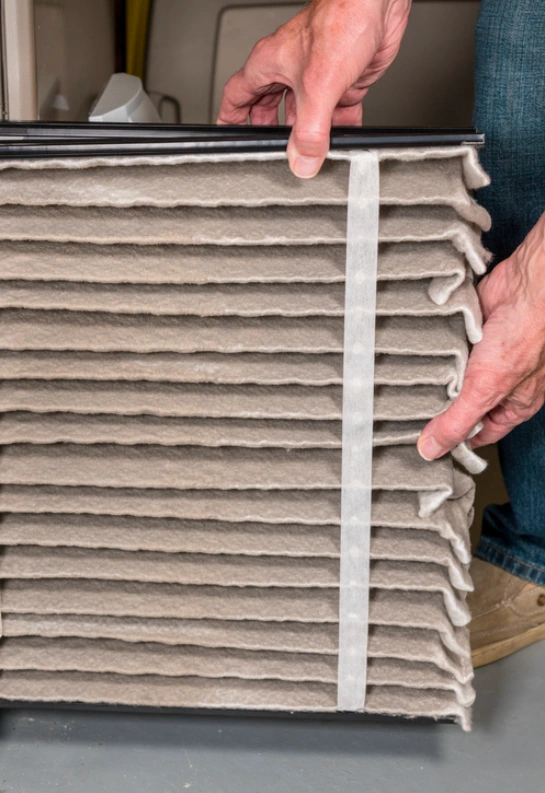
Ultimate Guide To Choosing the Right HVAC Air Filter for Your System
Release time:
15 Jul,2025

Summer heat demands a reliable HVAC system for comfort and health. The unsung heroes? Air filters. They trap dust, pollen, and particles so you breathe easily while your system runs efficiently—reducing energy bills and extending its lifespan.
Choosing the right filter can be overwhelming, though. Between washable, disposable, and media filters, plus electronic air cleaners and MERV ratings, it’s easy to feel lost. This guide cuts through the confusion. We’ll explain filter types, demystify MERV ratings, and empower you to choose wisely.

Understanding MERV Ratings
MERV (Minimum Efficiency Reporting Value) measures a filter’s ability to capture particles of varying sizes. Ranging from 1 to 20 (higher = better filtration), this ASHRAE-developed scale helps you match filters to your needs:
MERV 1–4: Traps large particles (dust, lint, pollen).
Best for: Basic home air quality.
MERV 5–8: Captures mold spores, pet dander.
Best for: Homes with pets/mild allergies.
MERV 9–16: Filters bacteria, smoke, fine dust.
Best for: High air quality needs (allergies, pollution).
MERV 17–20 (HEPA): Removes 99.97% of particles ≥0.3 microns.
Best for: Labs, hospitals, severe allergies.
Choosing Your MERV Rating
Consider:
Health Needs: Allergies/asthma? Choose MERV 9–16.
Pets: Opt for ≥MERV 5–8.
Local Air Quality: High pollution? Prioritize MERV 11–13.
HVAC Compatibility: Higher MERV = denser filters. Ensure your system can handle airflow resistance (consult your HVAC manual or a professional).
Maintenance: Higher MERV filters clog faster—replace more frequently.
⚠️ Critical Tip: Verify system compatibility with a duct static pressure test before using high-MERV filters.
Types of HVAC Filters
1. Washable Filters
Reusable, typically MERV 4–9
✓ Pros: Cost-effective long-term, eco-friendly.
✗ Cons: Require frequent cleaning; prone to mold/bacterial growth if improperly dried; may degrade over time.
2. Disposable Filters
*Single-use, MERV 1–13*
✓ Pros: Low-maintenance, wide MERV range.
✗ Cons: Ongoing replacement costs; less eco-friendly.
3. Media Filters
*Deep-pleated design, MERV 11–13*
✓ Pros: Superior particle capture (down to 0.3 microns), longer lifespan.
✗ Cons: Higher upfront cost.
4. Electronic Air Cleaners
Electrostatic particle capture
✓ Pros: Highly efficient for micro-particles; reusable components.
✗ Cons: Expensive; requires regular cleaning; may emit trace ozone.
Key Selection Criteria
Household Needs: Prioritize higher MERV for allergies/pets.
System Compatibility: Never exceed your HVAC’s airflow capacity.
Cost vs. Maintenance: Weigh upfront price against replacement frequency.
Eco-Impact: Washables reduce landfill waste.
Filter Lifespan: Disposables last 1–3 months; washables/media last longer but need care.
Air Quality Goals: Higher MERV = cleaner air.
Maintenance Tips
Monthly Checks: Inspect filters during peak seasons.
Replace When: Dirty, airflow drops, dust accumulates, or energy bills rise.
Cleaning Washables:
Turn off HVAC.
Rinse gently (no high pressure).
Use mild detergent if needed.
Air-dry completely before reinstalling.
🛑 Critical Reminder: Clean filters are the #1 defense against HVAC failure. Dirt causes >80% of system breakdowns!
DIY vs. Professional Maintenance
DIY: Suitable for basic filter checks/replacements.
Professional: Recommended for system diagnostics, pressure tests, and ensuring optimal efficiency.
Hebei Lianrun Auto Parts Co., Ltd.
Explore our range of HVAC and automotive air filters:
🌐 Website: www.lianrunfilter.com
📧 Email: jhp@deerka.com
📱 WhatsApp: +8615731926668
Tag:



